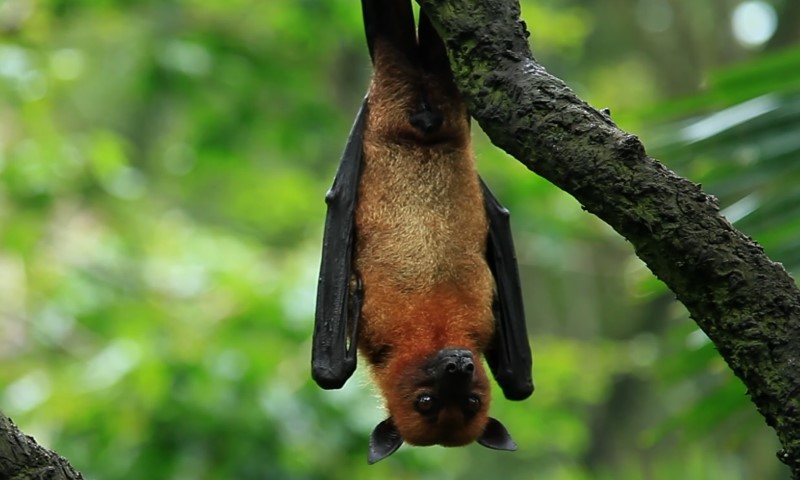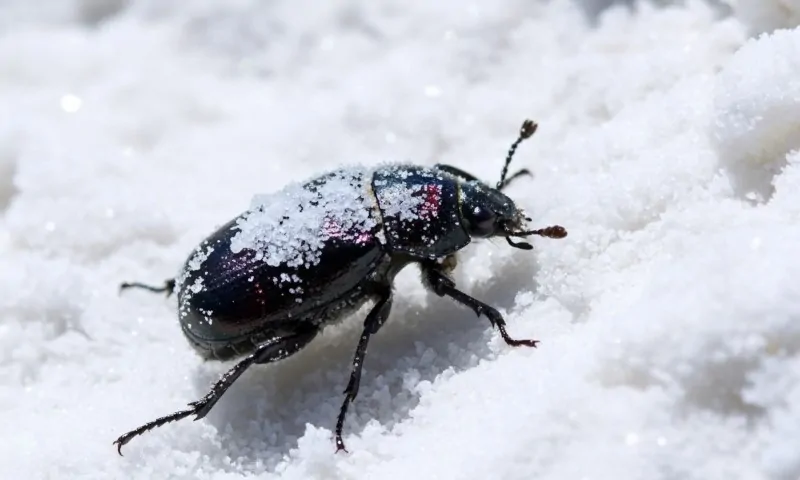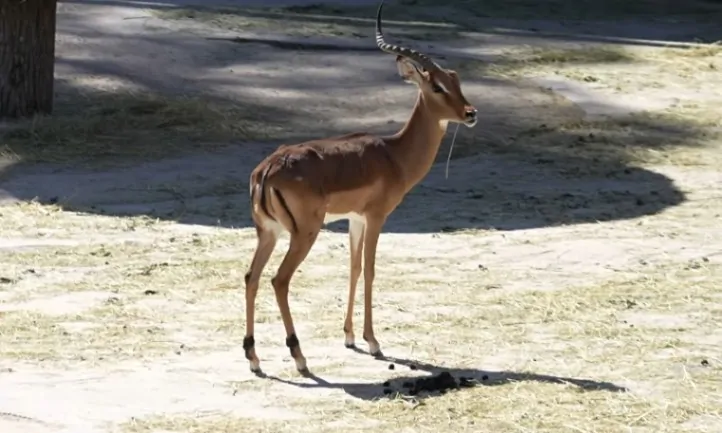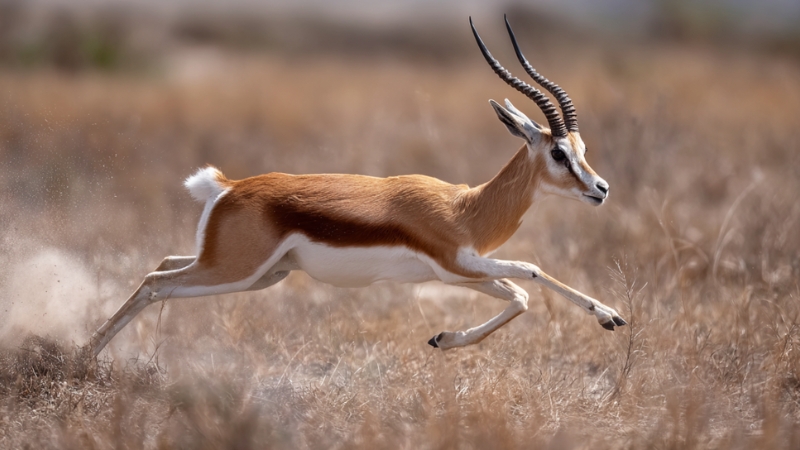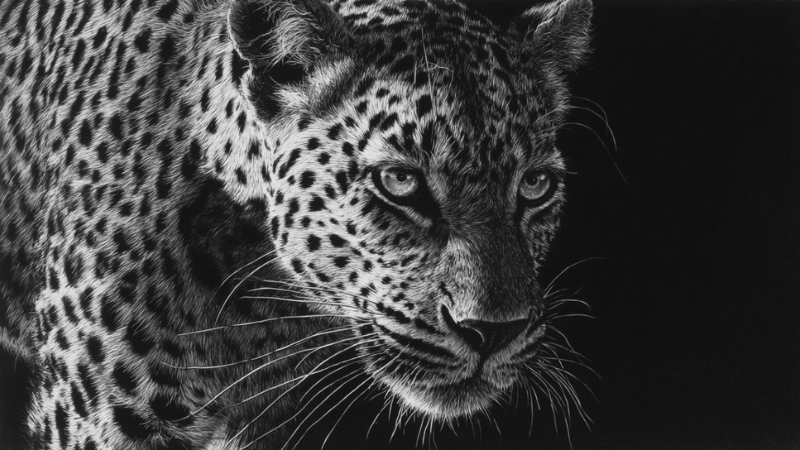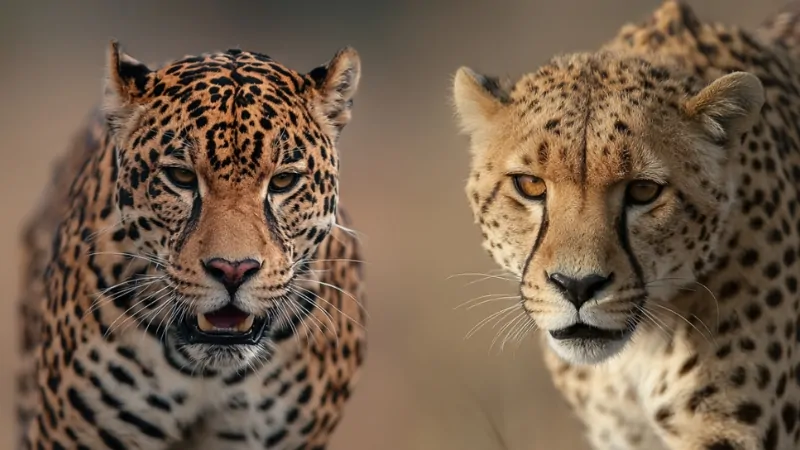Surviving a desert summer takes more than endurance. For bats, it’s a full-time physiological strategy. When the air itself becomes as hot as a mammal’s body, most creatures retreat, slow down, or perish.
Bats manage to keep flying, hunting, and breeding across desert nights through a precise balance of behavior, microhabitat choice, and metabolic control. Their cooling methods read like a desert survival manual written by evolution itself.
Table of Contents
ToggleKey Points
- Desert bats survive extreme heat through behavioral and physiological control, not endurance alone.
- They rely on roost microclimate choice, thermoconformation, and evaporative cooling via wings, saliva, and respiration.
- Torpor and flexible activity timing minimize heat gain and water loss.
- Safe roosts, nearby water, and well-designed artificial shelters are essential for survival during heatwaves.
Field-Tested Mechanisms Bats Use to Stay Cool
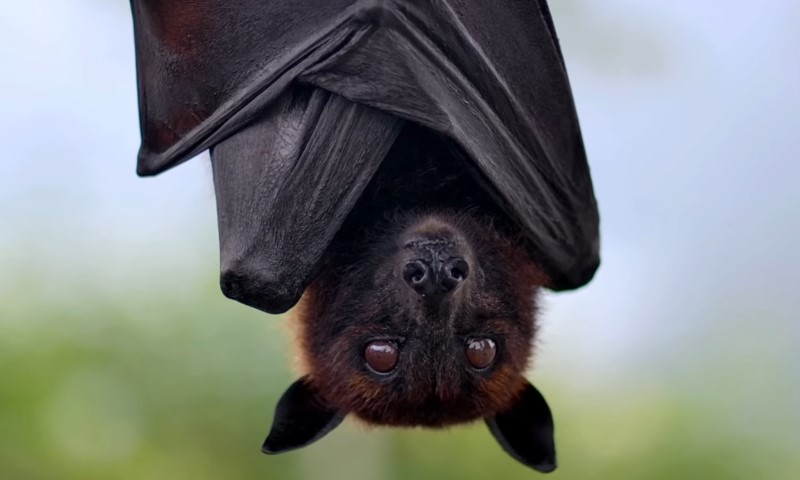
Desert bats rely on a blend of behavioral and physiological tools. Each contributes to maintaining the delicate balance between temperature and hydration.
1. Roost Microclimate Choice
Roost selection is the first line of defense. Desert bats do not simply hide anywhere dark. They search for roosts that maintain stable, buffered microclimates, cool enough to prevent lethal heat buildup but warm enough to minimize metabolic strain.
Common sites include:
- Vertical rock crevices
- Shaded caves and abandoned mines
- Deep cracks in cliffs or canyon walls
- Attics and old structures in desert towns
Fieldwork in Arizona shows pallid bats frequently choosing vertical crevices that track external temperature changes through the day.
They allow passive warming in the morning but stay below critical heat levels by afternoon. The pattern suggests a fine-tuned behavioral thermoregulation system supported by roost geometry.
Cooler, buffered refuges favor lower thermal thresholds but reduce flexibility. That link between microclimate and physiology now appears consistent across desert species.
2. Temporal Behavior
Timing matters as much as shelter. Desert bats minimize exposure by shifting activity into cooler periods. Their schedule looks something like this:
| Time of Day | Typical Activity | Cooling Function |
| Pre-dawn to morning | Return to roost, settle | Allow body temperature to rise gradually with ambient temperature to conserve water |
| Midday | Rest quietly, minimal movement | Prevent metabolic heat generation |
| Late afternoon | Begin thermoregulation and grooming | Stabilize body temperature before activity |
| Night | Two foraging bouts with rest period | Exploit low temperatures, possible torpor between bouts |
Pallid bats, for example, often show two distinct foraging bouts split by a resting phase around midnight. That middle rest period may include torpor, a shallow state of reduced metabolism that further cuts energy and water use.
When daytime air temperatures exceed roughly 42 °C in laboratory trials, bats survive only by staying motionless and relying heavily on evaporative cooling to keep body temperature from climbing past ambient.
3. Evaporative Cooling Behaviors
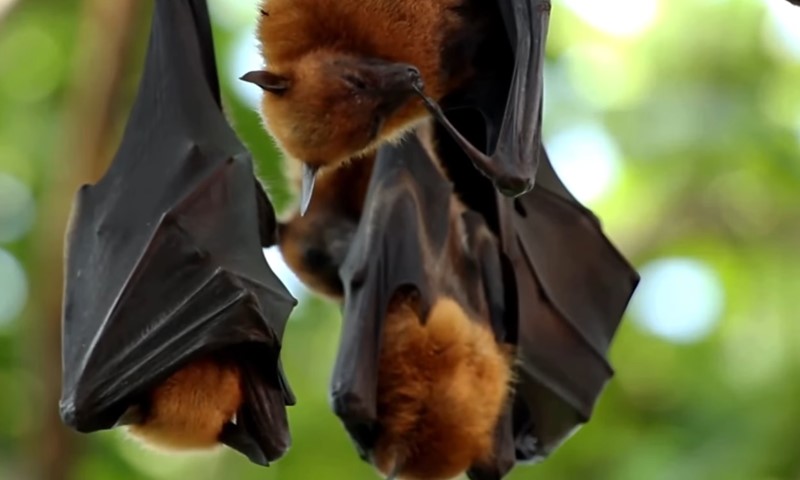
When passive defenses fail, bats turn to active cooling. They use evaporation through multiple channels: skin, saliva, and respiration, to release heat.
Observed strategies include:
- Wing spreading: Extending the thin, vascularized membranes increases surface area for convective and evaporative heat loss.
- Licking fur: Spreading saliva across sparsely furred areas enhances cutaneous evaporation.
- Panting: Accelerates respiratory evaporation, similar to dogs under heat stress.
In extreme conditions, bats have been observed repeatedly licking their bodies, sometimes abandoning sleep altogether during the hottest hours. Each method extracts heat but costs precious water.
Sex Differences in Water Use
Research on arid Australian bats shows females often hold lower body temperatures than males under the same heat load. They also delay the point at which evaporative water loss increases sharply.
The behavior suggests an adaptation for conserving water during reproduction, when hydration and energy must also support pup development.
4. Heterothermy and Thermoconformation
Desert bats practice thermoconformation, the controlled alignment of body temperature with ambient air. Instead of keeping body temperature fixed, they let it fluctuate to reduce heat gain and water loss. Skin temperatures in arid species can range from about 19 °C at night to as high as 45 °C during summer days.
By narrowing the temperature gradient between their bodies and the surrounding air, bats slow down both heat influx and evaporative water loss.
Another layer of control is torpor , a reversible state of lowered metabolism and temperature. During torpor, energy demand drops dramatically, allowing bats to ride through long, hot days without burning energy and skin, or evaporating water. Comparative data from the Negev Desert and the American Southwest show torpor as a defining adaptation in desert bat lineages.
5. Morphological Leverage
A bat’s wings serve as built-in heat exchangers. Each wing membrane is filled with blood vessels that can be constricted or dilated to manage temperature.
When overheated, bats spread their wings, exposing them to moving air or cooler surfaces. The thin tissue rapidly releases stored heat through radiation and convection.
Laboratory measurements across bat families show that under high air temperatures, evaporative heat loss from wings can exceed the animal’s total metabolic heat production, allowing it to stay below ambient temperature even in near-lethal conditions.
How Hot Is Too Hot, and How Much Water Does Cooling Cost?
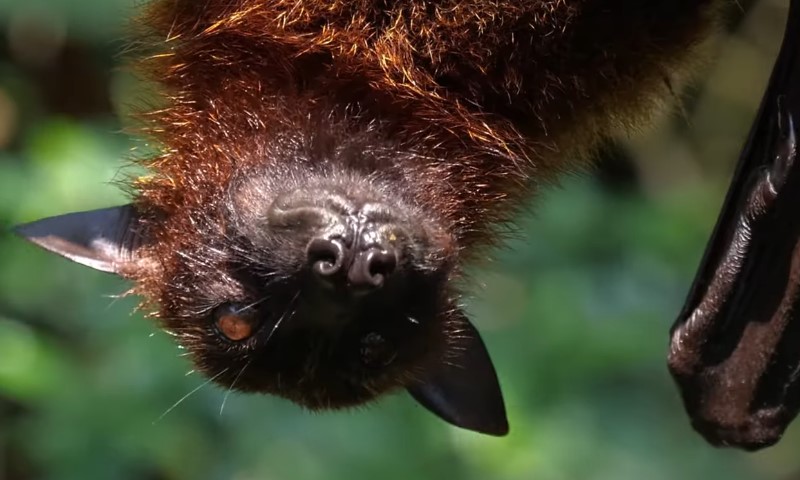
The limit for desert bats lies close to their physiological edge. Data from multiple species provide a clearer picture of what happens as heat rises.
Thresholds and Limits
Species roosting in hotter environments have developed higher maximum tolerable ambient temperatures and stronger evaporative cooling capacity. Comparative data list Ta,max (maximum tolerable air temperature) values from roughly 42 to nearly 50 °C . Bats in cooler refuges fall on the lower end, while those in open rock cracks push the upper bound.
In controlled trials, survival above 42.5 °C requires maintaining body temperature equal to or below ambient through aggressive evaporative cooling. Any self-generated heat adds risk.
Water Budgets Under Heat
A clear case study comes from the arid long-eared bat.
During a standard hot day, researchers estimated evaporative cooling costs at 18 to 26 percent of body mass . When modeled against heatwave conditions, that figure climbed to 37 to 47 percent , levels that approach or surpass lethal dehydration thresholds if water is unavailable.
Another comparison from the Negev Desert found two local bat species with exceptionally low total evaporative water loss, significantly lower than temperate relatives.
Even when air temperatures rose, their rates stayed modest, showing how far desert bats, and desert animals overall, have evolved toward water conservation.
Roosts as Cooling Infrastructure
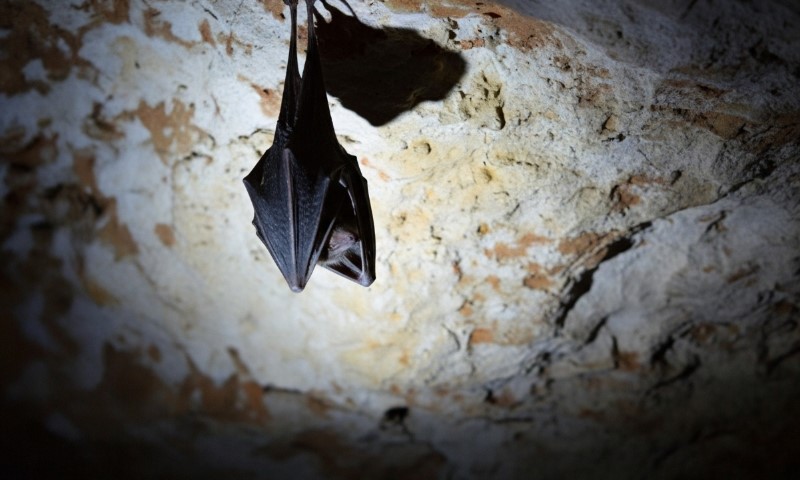
Roosts are not passive shelters. They are part of the bat’s cooling system.
Why Roost Choice Matters Every Hour
The temperature pattern inside a roost determines how hard a bat must work to maintain balance. A shaded mine or deep cave buffers temperature swings, allowing bats to rely on torpor and thermoconformation instead of costly evaporative cooling.
Exposed attics, thin rock cracks, or sunlit bat boxes can trap heat, forcing active cooling and risking dehydration or death.
Desert bats are known to switch between roosts through the year. In spring and fall, they may favor warmer crevices for faster recovery and pup growth. In summer, they move to deeper, more stable refuges.
Management Note on Artificial Roosts
Conservation programs often install bat boxes, but design errors can turn them into heat traps. A dark box exposed to full sun can easily exceed 50 °C inside. When that happens, internal colonies face mass mortality within hours.
To prevent overheating, artificial roosts in arid landscapes should:
- Use lighter colors to reflect sunlight
- Include ventilation gaps for airflow
- Be oriented away from direct afternoon sun
- Have internal thermal buffering materials
Field managers now treat thermal testing of bat boxes as a routine conservation task.
The Daily Cooling Playbook in Desert Heat
Desert bats structure their day to stay one step ahead of the sun. The sequence below captures the core rhythm of survival.
Pre-dawn to Morning
Returning from a night of hunting, bats enter their roosts with high energy reserves. They remain still and allow their body temperature to rise gradually with the warming air. This reduces the temperature gap between body and ambient, conserving water.
Midday Peak
As heat peaks above 40 °C, bats switch to active measures. They spread wings, lick fur, and pant to dissipate heat. Colonies reduce clustering to avoid conductive heat transfer from neighboring bodies.
When water is scarce, they sometimes tolerate higher body temperatures, trading short-term heat storage for water savings.
Late Afternoon
As air cools, bats stabilize their temperature for flight. They may briefly cool themselves again through minor evaporation to prepare muscles for nocturnal activity.
Night
Most activity happens at night, when the cost of cooling is lowest. Bats forage in two main bouts, often separated by a rest interval that may include short torpor. This rhythm minimizes total water and energy expenditure over 24 hours.
What Comparative Physiology Shows
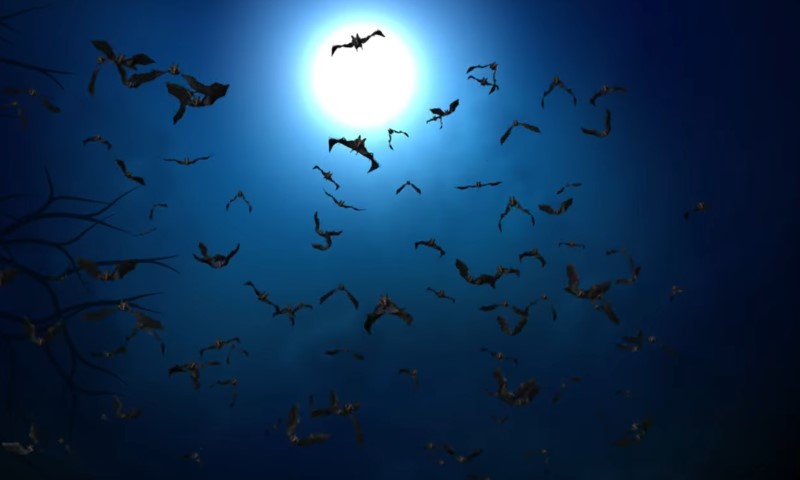
Decades of fieldwork and lab research reveal just how finely tuned desert bats are to their environment.
Low Evaporative Water Loss for Their Size
Measurements from the Negev Desert show both long-eared and free-tailed bats with very low total evaporative water loss. Even at rest, they lose less water than similar-sized temperate bats, confirming their efficiency in arid climates.
No Universal Low Metabolic Rate
Contrary to early assumptions, desert bats do not necessarily maintain a lower basal metabolic rate than other insectivorous bats. Instead, their survival depends on flexible thermoregulation and tight water control , not simply on low metabolism.
Sex and Life History
Reproductive females manage the hardest balance. Their need to conserve water while nursing or pregnant drives different thermal thresholds.
In observed populations, females delayed the rise in evaporative water loss to higher temperatures and maintained cooler body temperatures overall. Those fine adjustments help them sustain reproduction under desert heat.
Roost Microclimate Predicts Physiology
Across species, hotter roost exposure correlates with both higher evaporative cooling capacity and higher heat tolerance limits.
That consistent link explains why certain bats persist in exposed desert rocks while others rely on shaded caves or human-made shelters.
Pallid Bats and Other North American Desert Species
View this post on Instagram
A post shared by Bat Conservation International (@batconservationinternational)
The pallid bat is one of the best-studied desert dwellers in North America. Found from Mexico to western Canada, it thrives in rocky and arid habitats that challenge most mammals.
Roosting Behavior
Pallid bats use a mix of:
- Warm day roosts in crevices and buildings
- Night roosts in open or leafy areas
- Winter refuges in caves or cracks
They often cluster during the day for protection but space out when temperatures climb. Field recordings in Arizona reveal adaptive hypothermia and torpor both day and night, showing an extraordinary control of body temperature and metabolism.
Conservation Value of Mines and Caves
Abandoned mines and caves supply stable microclimates critical for maternity colonies. Protecting these structures has become a management priority in western parks.
Disturbing roosts, especially during maternity season, can disrupt populations that already face limited suitable sites.
Heatwaves, Failure Points, and Mortality Risk
Even the most heat-adapted bats have limits. When ambient temperatures inside roosts exceed tolerance, or when evaporative cooling demands surpass available water, physiological failure follows.
Heatwaves magnify every weakness in the system. Modeling from arid-zone studies shows evaporative water demand exceeding one third of body mass during extreme days. Without open water nearby, dehydration and hyperthermia occur rapidly.
Urban heat islands and open rock roosts are particularly dangerous. Documented die-offs of flying foxes during extreme heatwaves follow the same biological failure: the inability to evaporate enough heat without fatal water loss. Desert bats face that same risk as global heat extremes increase.
Practical Implications for Researchers and Land Managers
The lessons from desert bats go beyond academic curiosity. They point to concrete management and conservation actions.
1. Water Availability
Desert bats congregate at rare water sources: oases, livestock tanks, or temporary pools. Maintaining or creating safe open water near colonies can dramatically increase survival during heatwaves by reducing daily evaporative deficits.
2. Roost Protection and Design
- Preserve natural roosts such as caves, mines, and deep crevices.
- Avoid sealing or disturbing those habitats, especially during breeding months.
- When installing artificial roosts, ensure ventilation, light color, and proper orientation to prevent heat buildup.
3. Monitoring Priorities
Thermal monitoring should include roost interior temperatures, not just ambient air readings. Measuring water availability and proximity to foraging areas gives a clearer view of habitat suitability.
Pairing telemetry with physiological data, such as evaporative water loss and torpor duration, refines conservation models.
Mechanisms, Costs, and Tradeoffs at a Glance
| Mechanism | Primary Cooling Pathway | Water Cost | When Used | Key Constraints |
| Roost selection & posture | Passive heat control | None–low | Daily | Depends on microclimate |
| Thermoconformation | Align body temp with air | Low–moderate | Daytime | Risk of overheating if spikes |
| Torpor | Lower metabolism | Very low | Day or night | Limited during reproduction |
| Wing & saliva spreading | Cutaneous evaporation | Moderate | Midday peaks | Needs water reserve |
| Panting | Respiratory evaporation | Moderate–high | Heat spikes | Adds metabolic heat |
| Clustering adjustment | Social heat transfer | None | All day | Space dependent |
| Drinking | Restore water for EWL | External | Night | Requires access to water |
Key Numbers to Remember

- Heterothermy span: roughly 19–45 °C skin temperature range in arid bats.
- Critical ambient threshold: survival requires active cooling above 42.5 °C .
- Water cost of cooling: 18–26% of body mass on a hot day; 37–47% during extreme heatwaves.
- Low total evaporative water loss: measured desert species show significantly lower EWL than temperate bats.
Bottom Line
Desert bats operate on the thinnest survival margins in the mammal world. They do not depend on one magic adaptation but on a synchronized set of behaviors and physiological controls.
Their day unfolds like a routine: seek the right roost, stay still, match body temperature to air when possible, and spend water only when absolutely necessary.
They spread wings, lick fur, pant, and slip into torpor, all in calculated doses. Species from hotter roosts evolve stronger cooling capacity, yet every bat faces the same rising threat as desert heatwaves intensify. Without nearby water and safe, thermally buffered roosts, even the best-equipped desert survivors can fail.
The lesson from their endurance is simple: in the desert, every drop of water and every degree of shade counts.
Related Posts:
- Life in the Namib Desert - Africa's Oldest Desert…
- 6 Unique Plants Found in the Sahara Desert - Rare…
- How Are Camel Eyelashes Unique Among Desert Animals?
- Top 10 Most Dangerous Desert Animals You Should Avoid
- What Makes the Fennec Fox So Perfectly Adapted for…
- How the Addax Antelope Survives the World’s Harshest Desert

